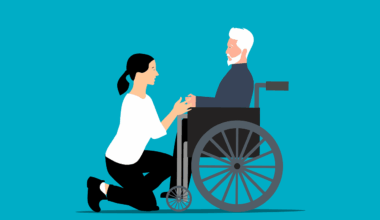Recovery Techniques and Mobility Exercises for Week 21
Workout recovery is crucial for maximizing performance and preventing injuries. In week 21 of your workout plan, focus on integrating mobility exercises and recovery techniques to enhance your flexibility and reduce muscle soreness. These practices facilitate the recovery process, allowing muscle fibers to rebuild stronger and reducing the risk of overuse injuries. Start with a comprehensive warm-up routine before you dive into your workout, as it prepares your muscles and joints for the activities ahead. After your workouts, consider incorporating static stretching to help cool down. Emphasizing recovery, dedicate specific days for mobility work such as yoga or foam rolling to enhance your movement range. Also, proper hydration and nutrition play vital roles in recovery during and after workouts. Essential nutrients help replenish energy stores and aid in tissue repair. Such recovery strategies should be integrated seamlessly into your workout routine to ensure consistent progress and longevity in your fitness journey. Your body will appreciate the extra care, and over time, you’ll notice significant gains in your performance, flexibility, and overall well-being.
One highly effective technique to enhance recovery is foam rolling. Foam rolling reduces muscle tightness and improves flexibility by targeting specific trigger points in tight muscles. Include foam rolling sessions after workouts, focusing on areas that feel particularly tense. Roll slowly over sore areas for approximately 30 seconds, ensuring to breathe deeply to promote relaxation. This technique helps release muscle knots and improves blood circulation, which is essential for recovery. Consider integrating other forms of self-myofascial release, such as massage balls, for deeper tissue work. This method encourages the release of muscle tension and aids in mobility enhancement. Another significant approach to recovery is contrast bathing, alternating between hot and cold water immersion. This technique encourages circulation and aids in muscle recovery post-exercise. Each immersion should last 1-2 minutes, alternating between hot and cold for about 15 minutes total. Emphasizing these strategies in your conditioning routine will allow your body to recover optimally, and you’ll feel better prepared for your next workout session. Remember, recovery is just as essential as the workout itself for sustainable progress.
Sleep is another crucial component of recovery. Aim for at least 7-9 hours of restful sleep each night to give your body enough time to recover and regenerate. Sleep allows muscle repair, hormone regulation, and overall recovery processes to take place at their peak efficiency. Create a restful environment by minimizing distractions and maintaining a consistent sleep schedule. Consider incorporating relaxation techniques before bed, such as meditation or gentle stretches, to promote better sleep quality. Furthermore, nutrition plays a critical role in recovery, especially post-workout. Focus on consuming a balanced meal or snack that includes carbohydrates, protein, and healthy fats. Carbohydrates replenish glycogen stores, while protein aids in muscle repair. Healthy fats also support overall recovery by reducing inflammation within the body. Prioritizing hydration is equally crucial as it helps in transporting vital nutrients throughout your body. Dehydration can impair recovery and elevate fatigue. Proper recovery routines not only boost physical performance but also enhance mental clarity and focus, key elements to sustaining progress in your fitness journey.
Effective Mobility Exercises
Incorporating specific mobility exercises into your weekly routine is vital for maintaining joint health and flexibility. Focus on a range of movements that promote full-body mobility, targeting the hips, shoulders, and spine. Common exercises include dynamic stretches such as leg swings, arm circles, and torso twists. These movements improve circulation and enhance flexibility, preparing your body for more rigorous workouts. Implementing activities like deep lunges and inchworms improves functional movement by increasing range of motion in the joints. It is essential to work on a mix of static and dynamic stretches, ensuring comprehensive coverage of all muscle groups. Incorporating yoga or Pilates classes into your weekly schedule can also enhance mobility, core strength, and overall stability. Both practices provide an excellent way to improve flexibility while reducing stress and increasing body awareness. Remember, proper form during these exercises is critical, so consider seeking guidance from a fitness professional if necessary. Perform each movement mindfully and at your own pace, allowing your body to adapt and grow stronger through consistent practice.
In addition to mobility exercises, consider implementing resistance bands into your routine. Bands are excellent for improving strength and mobility simultaneously, engaging multiple muscle groups in a controlled manner. Use bands for wall slides, lateral walks, and external rotations to enhance shoulder mobility and stability. These exercises can significantly contribute to functional strength and flexibility. As you progress, experiment with different band strengths and resistance levels, adding variety to your workouts. Make sure to balance these resistance exercises with stretching to prevent tightness. Another beneficial mobility technique is the hip opener routine. This series of stretches targets the hip flexors and glutes, areas that often tighten with extensive sitting or workouts. Movements such as pigeon stretch, figure four stretch, and low lunge are effective. Integrate this hip opener routine into your cool-down phase to aid in muscle recovery and maintain joint health. Additionally, consider scheduling dedicated mobility sessions weekly, ensuring ample time for your body to remain limber and ready for upcoming workouts. Emphasizing mobility will contribute to a well-rounded fitness regimen, ultimately leading to better performance.
The Importance of Consistency
Incorporating recovery techniques and mobility exercises consistently into your workout regimen is crucial for long-term progress. The benefits of these practices cumulate over time, leading to enhanced performance and reduced risk of injury. Establishing a routine centered around recovery techniques can help reinforce their importance as part of your overall fitness journey. Commit to setting aside time each week for specific mobility workouts, allowing your body to adapt and respond. Consistency ensures that the muscles remain pliable, which is vital for injury prevention. Keep track of your progress in flexibility and recovery by noting improvements in your workout performance. This tracking can be motivating and will encourage you to continue the recovery-focused practices. Adjust your routine as needed to address specific areas of concern or discomfort. By committing to these recovery techniques, you will build a solid foundation that supports your growth in strength and fitness. Always prioritize your well-being; remember that timely recovery contributes significantly to your workout performance. In time, you’ll find that embracing these techniques will pay dividends in your overall fitness success.
Incorporating a holistic approach to recovery can enhance not only physical performance but mental well-being as well. Activities such as meditation, deep breathing, or even light recreational walking play a significant role in mental recovery. These practices can reduce stress, promote relaxation, and enhance focus, positively impacting your workouts and daily life. Moreover, don’t underestimate the importance of social support during your fitness journey. Engaging in group fitness classes or partnering with a workout buddy can enhance motivation and accountability, making recovery sessions more enjoyable. Supportive environments encourage you to share recovery techniques, fostering community and camaraderie among participants. Remember, recovery is not merely about rest; it’s also about nurturing your body and mind through various techniques. Make it a priority to recognize when your body needs a break or simply a lighter workout load. By listening to your body and making necessary adjustments, you ensure continued improvement and passion for fitness. Ultimately, embracing these recovery methods and mobility exercises will bolster not only your physical capabilities but also your entire fitness experience.
Final Thoughts
In conclusion, establishing a consistent focus on mobility and recovery techniques will significantly improve your overall fitness and performance. This week’s emphasis on these elements is designed to help your body recover properly and regain strength post-workout. Ultimately, the key to sustainable success in fitness lies in balancing hard work with adequate recovery. By embracing systematic recovery techniques such as foam rolling, quality nutrition, and dedicated mobility exercises, you can fine-tune your workout regimen. Create a synergy between workouts and recovery strategies, noting that every workout session you complete deserves attention in recovery afterwards. The benefits manifest over time, with enhanced performance, increased flexibility, and reduced injury risks. Adopt a positive mindset toward your recovery practices, valuing them as essential components in your journey. Seek to discover activities you genuinely enjoy, making your recovery routines enjoyable and beneficial. Remember to celebrate your progress, no matter how small, as you navigate through your fitness goals. With dedication to mobility and recovery, you’ll not only enhance your abilities but also enjoy the process of growth and transformation.


